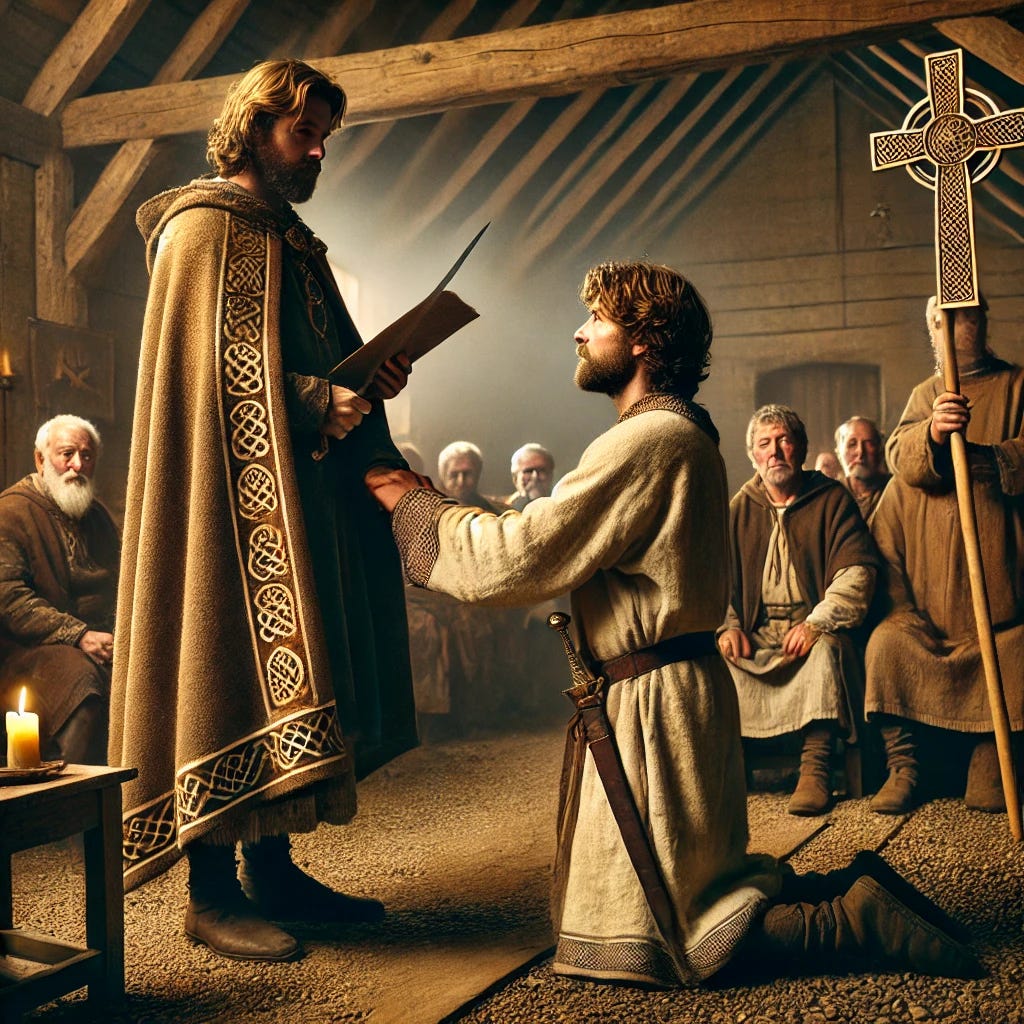Swearing Fealty: The Oaths That Bound Irish Lords and Vassals
The medieval feudal system is often associated with England and France, but Ireland had its own unique structure of lordship, loyalty, and vassalage. While feudalism in Ireland differed from the rigid system imposed by the Normans, the concept of swearing fealty—public oaths of loyalty and service—played a central role in maintaining political order and securing alliances among Gaelic chieftains, Norman lords, and vassals.
This blog explores the traditions of fealty in medieval Ireland, the ceremonies involved, and how these oaths shaped the power dynamics of Irish society.
The Structure of Irish Lordship: Beyond Feudalism
Unlike the strict feudal hierarchy of England and France, medieval Ireland operated under a system of clan-based kingship. Gaelic Ireland was divided into tuatha (tribal territories), each ruled by a rí (king or chieftain). These kings were not absolute rulers but depended on the loyalty and support of their derbfhine (extended kin group) and lesser uirithe (sub-chieftains or vassals).
This structure created a complex web of alliances, where kings, lesser lords, and warriors swore fealty not just as vassals, but often as blood relatives within a ruling family. However, when the Normans arrived in the 12th century, they introduced continental feudal practices, blending them with Gaelic traditions to create a hybrid system of governance.
The Ritual of Swearing Fealty in Ireland
1. The Ceremony of Homage (Tairngire)
In medieval Ireland, fealty oaths were taken in formal ceremonies, often held in the rath (fortified ringforts) of a king or chieftain. The ritual, known as tairngire ("pledge" or "promise"), involved:
The Kneeling Gesture: The vassal or lesser lord would kneel before the ruling king or chieftain. This symbolized submission, but in Gaelic culture, it was not absolute—kings ruled with the consent of their nobles, and rebellions were common.
Hand-Clasping and Binding: The vassal would place his hands within the hands of the lord, signifying trust and mutual obligation. In some cases, hands were physically bound together with a strip of cloth, much like a handfasting ceremony in Gaelic weddings.
Swearing by Sacred Objects: Fealty was often sworn upon a relic of a saint, a claymore (great sword), or even the Book of Kells or another illuminated manuscript, reinforcing the religious and legal weight of the vow.
2. The Verbal Oath
The exact wording of Irish fealty oaths varied, but they typically included:
“I swear fealty and service to you, my lord, with my body, my kin, and my sword. I shall be your man in battle, pay tribute as custom demands, and hold true to my pledge, under pain of dishonor and exile.”
Gaelic lords often reserved the right to break their oaths if they felt their ruler had failed in his duties—unlike in England, where fealty was more rigidly enforced.
The Rights and Responsibilities of Fealty
What the Vassal Owed the Lord
Swearing fealty meant more than just words—it came with real obligations, including:
Military Service – Vassals were expected to fight in their lord’s battles, providing soldiers from their own clans.
Tribute and Taxes – Payments were made in cattle (a major form of wealth in Gaelic Ireland), harvested crops, or even fine cloaks and swords.
Legal Support – Vassals were required to attend their lord’s court and uphold judgments, acting as enforcers of Gaelic law (Brehon Law).
What the Lord Owed the Vassal
Fealty was a two-way agreement, and lords had duties to their vassals as well:
Protection in War – A lord was bound to defend his vassals against enemy raids.
Land and Status – In return for service, vassals were granted land or grazing rights.
Honor and Gifts – Lords often gave their most loyal vassals rings, gold torcs, and fine weapons to reward their service.
Norman Influence: A Clash of Feudal and Gaelic Loyalties
When the Normans invaded Ireland in 1169, they brought with them continental feudal customs, where oaths of fealty were strictly enforced by law. This clashed with Gaelic traditions, where loyalty was based on kinship and mutual benefit rather than legal contracts.
As a result, a unique hybrid system developed:
Norman barons swore fealty to the English crown but often adopted Gaelic customs to maintain power in Irish territories.
Gaelic chiefs, in turn, sometimes swore fealty to Norman lords, only to later rebel when the political tides changed.
Even English kings demanded "The Submission of the Irish", as seen when Henry VIII forced Irish lords to recognize him as their sovereign in 1541—but many continued to resist English rule.
This blending of cultures led to the rise of the "Gaelicized Normans", or Hiberno-Normans, who famously adopted the saying:
“They became more Irish than the Irish themselves.”
The Decline of Fealty in Ireland
By the 16th and 17th centuries, fealty oaths in Ireland were gradually replaced by legal contracts under English rule. The old Gaelic system of lordship collapsed after the Tudor Conquest, and Irish chiefs were stripped of their lands unless they accepted English titles and feudal land grants.
The last great act of fealty in Ireland was arguably The Flight of the Earls (1607), when the Gaelic lords of Ulster, including Hugh O’Neill, fled to Europe after losing their final battle against English rule. With them, they took the last vestiges of the old Gaelic order.
Conclusion: Fealty as a Living Tradition
Though medieval fealty oaths have disappeared, their influence can still be seen in modern Ireland. Clans, kinship, and local loyalty remain strong, and the Gaelic tradition of "standing by your word" is still an important part of Irish culture.
Even today, ceremonies like swearing in an Irish president bear echoes of ancient fealty rituals, reminding us that loyalty, service, and honor are timeless values.




